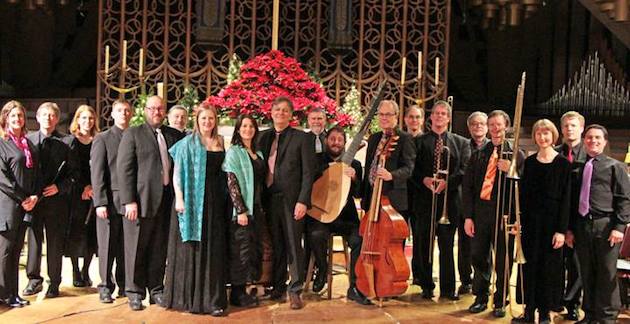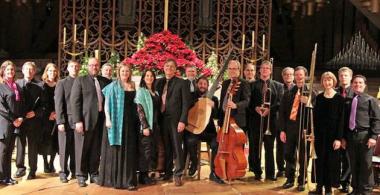
Ordinarily presenting works from the 17th century, Artistic Director Warren Stewart calls the Lutheran mass, written near 1738 for the first Sunday of advent, “new music.”
“Most often, people are looking backwards at Bach,” Stewart says, “but we’re looking forward to the 18th century from our more usual 17th-century realm.” “Most often, people are looking backwards at Bach, but we’re looking forward to the 18th century from our more usual 17th-century realm.”
Of course the cantatas, chorales, congregational singing, organ interludes, and other aspects of the mass aren’t exactly “new” to Stewart. He has led groups performing the work before and says experience certainly informs his take on the mass. But with a mindset that means “every rehearsal, everything’s always brand new and I hope that never changes,” Stewart is eager to share the experience in Palo Alto, Berkeley, and San Francisco this weekend with audiences, who’ll sing along during two sections of the piece.
“The interesting point about that is that the chorale associated with the mass is also a tune that occurs seven, eight other times in the music. That it shows up so many times provides unity for the audience.”
People familiar with the mass may discover other changes. Instead of multiple violins and a full orchestra, single instruments will represent entire sections. Soloists including soprano Christine Brandes, countertenor Andrew Rader, tenor Brian Thorsett, and bass Robert Stafford will similarly join the ensemble to sing music otherwise performed by a choir.
Before the invention of recorded music, the only opportunity for a person to hear Bach’s music was when there was another live body in the room. “Even then, the musicians couldn’t hear themselves,” Stewart says. “And if you didn’t go to mass, you didn’t hear this music.” Despite recorded sound having changed the landscape forever, most people agree, there’s nothing quite like the “here-and-only-now” undertones of a live performance.
The biggest difference, other than the audience participants as Magnificat carries the work to three different venues, is the organ. Because each organ’s pipes, pedal board, positioning, and voice provide varying sound — Stewart says the organ at St. Mark’s Lutheran church is most “bubbly” — organist Davitt Moroney will need to adapt rapidly. Fortunately, Stewart says, “For an organ player, being adaptable is part of the trade.”
And inarguably, it’s part of being an avant-garde artist.

